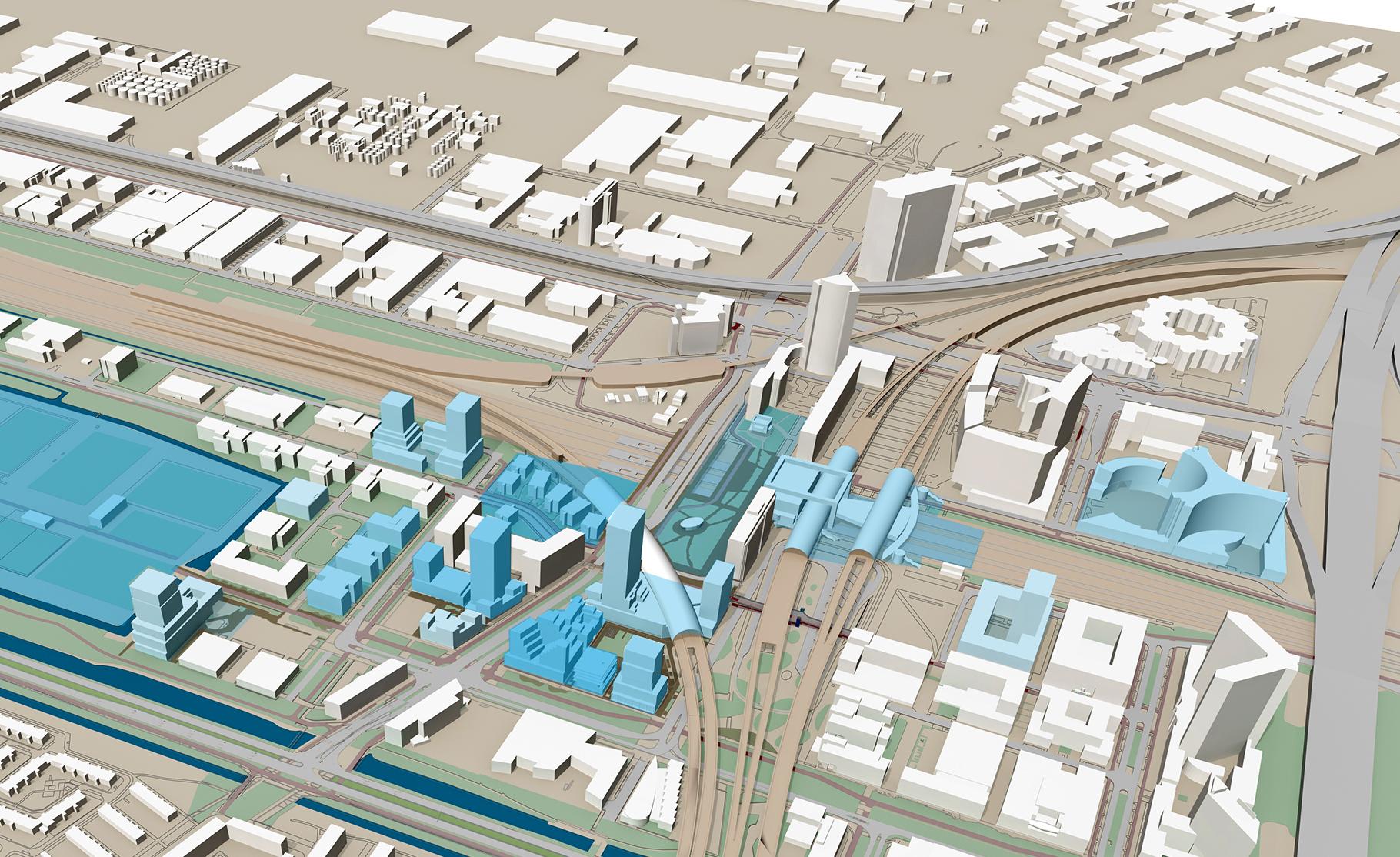
Sloterdijk: pleasant living despite noisy environment
The municipality of Amsterdam had plans for housing construction at the Sloterdijk office location for years. A major challenge, because the area is surrounded by noise - and that can get in the way of a pleasant living environment. Senior advisor Theodoor Höngens has been involved in this project since 2003: ‘Construction is now under way thanks to our studies.’
Sloterdijk is very centrally located. So not surprisingly, the municipality of Amsterdam wanted to build houses there, especially because there was little demand for office space at the start of this century. But the area was not suitable for living: the A10, A5 and Haarlemmerweg motorways, busy connecting roads, the railway and the industrial estate produced a lot of noise. It took years before a suitable plan was developed for housing construction and the transformation of offices into homes.
Exciting
‘That was quite exciting’, Theodoor recalls. ‘Because the new buildings were going to be close to the port’s industry, we were afraid it would scare off the businesses. Businesses that simply wanted to continue or expand their activities, of course. Thanks to several intensive meetings organised by the municipality, we were able to reassure them. In the zoning plan, we arranged everything in such a way that the businesses didn’t have to sacrifice anything. And that’s how we came up with a plan that ultimately, met no resistance. A very nice process!’
New developments
At the time, part of Sloterdijk was not included in the housing construction plans. Otherwise, for example, buildings with three façades with non-openable windows would have to be built in that specific location. ‘And that’s not as easy as it sounds’, Theodoor emphasises. But recent developments have made it possible to build houses there. ‘One of the most important changes is the one at Haarlemmerweg, which runs on the south side of Sloterdijk. It was subsiding and had to be raised. We advised the municipality to build a quiet road surface during the reconstruction and also to lower the speed limit. That would mean considerably less noise in the area from at least one side.’
One of the housing projects that could be developed as a result is Floating Gardens, a striking building with apartments, a primary school and childcare facilities. From the first drafts, M+P advised the architect on important choices, such as the second façade, the open core and the location of the school. ‘And M+P is involved in several other projects’, Theodoor explains. ‘Of course, we work together a lot with the municipality, but it also means project developers and housing associations notice us.’
Critical attitude
For example, M+P has been involved with Sloterdijk for many years, and thanks to a framework contract, this will continue in the coming years. M+P helps to make development into a living/working area possible through acoustic research, among other things. ‘We’re also active on the practical side, the design of buildings’, says Theodoor. ‘In the last zoning plan, for example, we advised to create many enclosed building blocks. They’re building blocks with an inner courtyard, so you have a quiet façade. We always adopt a critical attitude in our advice. Because a design shouldn’t only be beautiful and comply exactly with regulations, but also provide a pleasant, healthy living environment. We think that’s the most important thing.’
